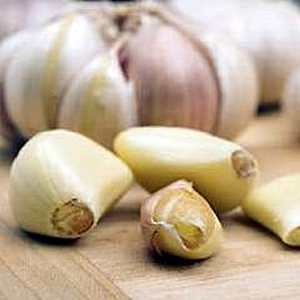 Who loves garlic? As in other places in the world, garlic was grown in Italy for centuries. Around 70% of Italy’s garlic today is exported. The main growing areas for garlic in Italy are Veneto, Puglia, Sicily, Campania and Emilia-Romagna. Garlic has many varieties, including Rosso di Agrigento, Rosso di Sulmona, Rosso Napoletano, Bianco Piancentino, Bianco Napoletano and algio selvatico (wild garlic).
Who loves garlic? As in other places in the world, garlic was grown in Italy for centuries. Around 70% of Italy’s garlic today is exported. The main growing areas for garlic in Italy are Veneto, Puglia, Sicily, Campania and Emilia-Romagna. Garlic has many varieties, including Rosso di Agrigento, Rosso di Sulmona, Rosso Napoletano, Bianco Piancentino, Bianco Napoletano and algio selvatico (wild garlic).Generally, the smaller varieties of garlic have the most flavour and aroma. The best garlic should be around 4-5cm wide, compact, firm cloves and no green shoots growing from the top, which can have a bitter aftertaste. Garlic is best peeled by pressing on the cloves to loosen the skin, not peeled with a knife. Garlic, in Italian cooking, is used to compliment a dish, not dominate it. It can be used in almost any dish or sauces, cooked or raw, and either the flesh or just the oil/flavour. It can also be rubbed on food surfaces to leave aroma and flavour. Garlic also lends itself to being prepared, cooked and eaten in many forms, including chopped, sliced, minced, crushed, whole, steamed, baked, fried and other ways.
Medicinally, garlic is a great antibacterial, antiseptic and probiotic. It has been used for centuries in Europe as a medicine, as well as in World Wars I and II as an antiseptic. It’s also great for keeping vampires at bay!
